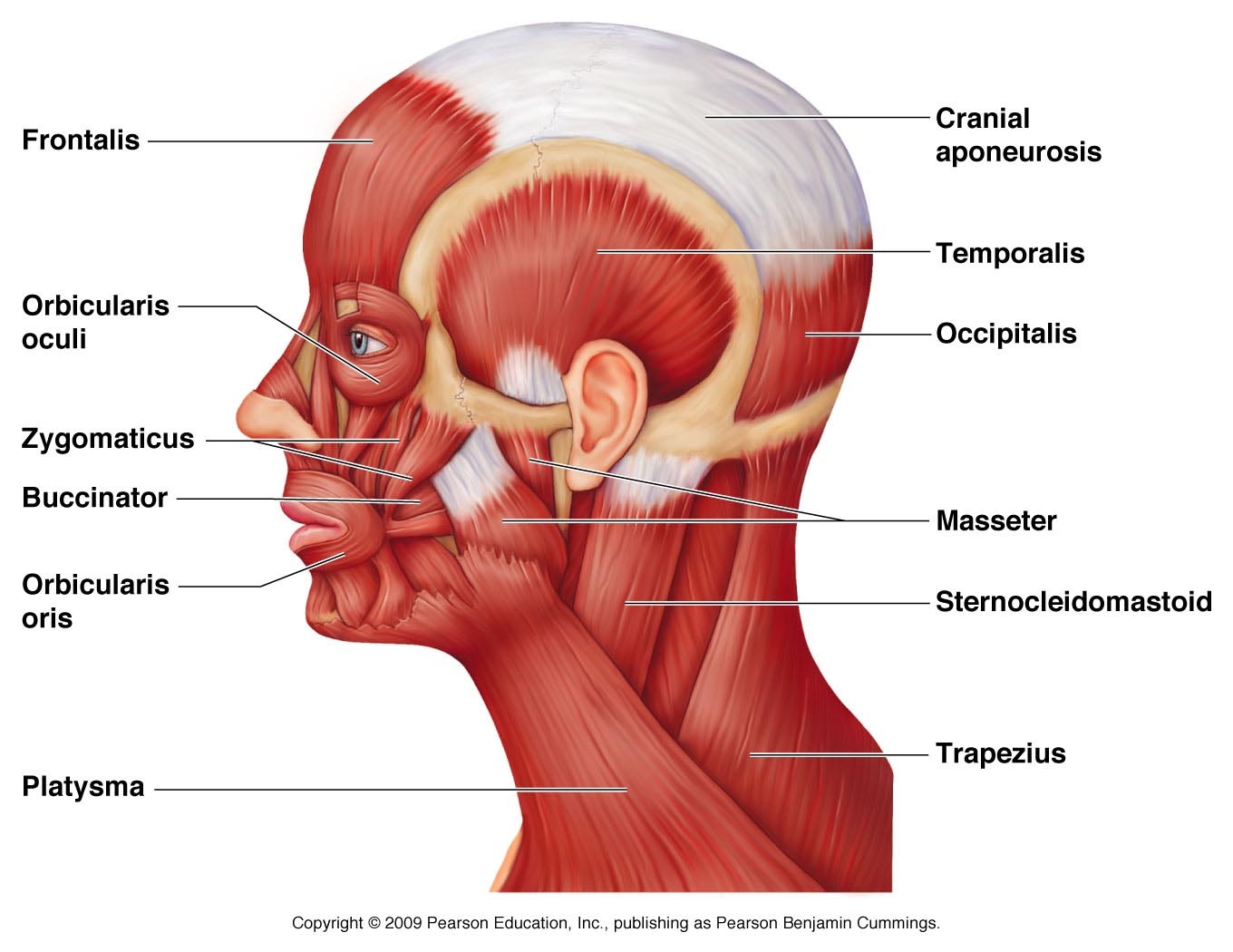Physiology
Physiology
The relatively permanent appearance of our face, its physiognomy, is established by the shape of the bones of our skull, and the distinct features that are formed by our cartilage and soft tissues, such as the muscles, fat, and skin. All facial expressions are built upon this foundation of flesh and bone. This consistent appearance of the face underlies our attribution of identity to a person.
The facial nerve is the seventh (VII) cranial nerve, which originates from the lower third of the motor strip and supplies the entire facial musculature. Principle muscles include the frontalis, orbicularis oculi, buccinator, orbicularis oris, platysma, the posterior belly of the digastric, and the stapedius muscle (Walker, 1990).
The relatively permanent appearance of our face, its physiognomy, is established by the shape of the bones of our skull, and the distinct features that are formed by our cartilage and soft tissues, such as the muscles, fat, and skin. All facial expressions are built upon this foundation of flesh and bone. This consistent appearance of the face underlies our attribution of identity to a person.
The facial nerve is the seventh (VII) cranial nerve, which originates from the lower third of the motor strip and supplies the entire facial musculature. Principle muscles include the frontalis, orbicularis oculi, buccinator, orbicularis oris, platysma, the posterior belly of the digastric, and the stapedius muscle (Walker, 1990).
Overall, there are 43 muscles involved in our facial movement and many of them work together to generate some of the universal expressions we all tend to recognize and understand. When Ekman and Friesen created their taxonomy of facial expressions, they combed through numerous medical textbooks that outlined these muscles and identified every distinct muscular movement the face could make (Gladwell, 2005). They identified 43 such movements and called them Action Units (AU's) (Gladwell, 2005). By layering these movements and combining them, we get a nearly endless list of possible expressions. Ultimately, Ekman and Friesen assembled all possible combinations, as well as rules for reading and interpreting them, into the Facial Action Coding System (FACS)(Gladwell, 2005).
Overall, there are 43 muscles involved in our facial movement and many of them work together to generate some of the universal expressions we all tend to recognize and understand. When Ekman and Friesen created their taxonomy of facial expressions, they combed through numerous medical textbooks that outlined these muscles and identified every distinct muscular movement the face could make (Gladwell, 2005). They identified 43 such movements and called them Action Units (AU's) (Gladwell, 2005). By layering these movements and combining them, we get a nearly endless list of possible expressions. Ultimately, Ekman and Friesen assembled all possible combinations, as well as rules for reading and interpreting them, into the Facial Action Coding System (FACS)(Gladwell, 2005).
While many of our facial expressions can be made voluntarily, our faces are also governed by a separate, involuntary system that makes expressions we have no conscious control over (Gladwell, 2005). These involuntary flashes of facial expression often occur so quickly that, to an untrained observer, they may almost be imperceptible. Ekman termed these fleeting looks micro expressions and beliefs that they allow our authentic, unmasked emotions to leak out.
While many of our facial expressions can be made voluntarily, our faces are also governed by a separate, involuntary system that makes expressions we have no conscious control over (Gladwell, 2005). These involuntary flashes of facial expression often occur so quickly that, to an untrained observer, they may almost be imperceptible. Ekman termed these fleeting looks micro expressions and beliefs that they allow our authentic, unmasked emotions to leak out.
-
Login:
-
(Logout)
More Than Meets the Eye




